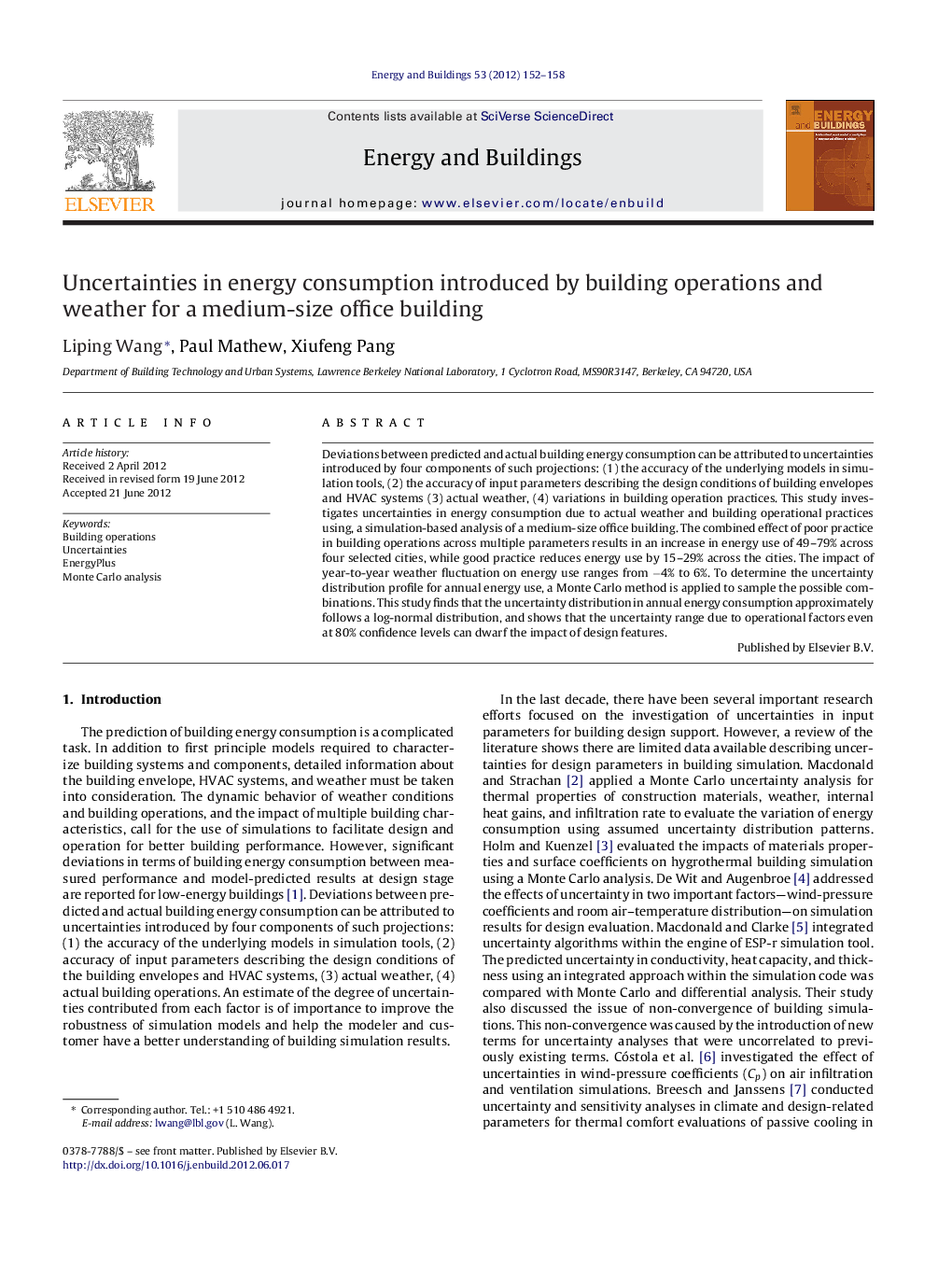| Article ID | Journal | Published Year | Pages | File Type |
|---|---|---|---|---|
| 263706 | Energy and Buildings | 2012 | 7 Pages |
Deviations between predicted and actual building energy consumption can be attributed to uncertainties introduced by four components of such projections: (1) the accuracy of the underlying models in simulation tools, (2) the accuracy of input parameters describing the design conditions of building envelopes and HVAC systems (3) actual weather, (4) variations in building operation practices. This study investigates uncertainties in energy consumption due to actual weather and building operational practices using, a simulation-based analysis of a medium-size office building. The combined effect of poor practice in building operations across multiple parameters results in an increase in energy use of 49–79% across four selected cities, while good practice reduces energy use by 15–29% across the cities. The impact of year-to-year weather fluctuation on energy use ranges from −4% to 6%. To determine the uncertainty distribution profile for annual energy use, a Monte Carlo method is applied to sample the possible combinations. This study finds that the uncertainty distribution in annual energy consumption approximately follows a log-normal distribution, and shows that the uncertainty range due to operational factors even at 80% confidence levels can dwarf the impact of design features.
► The uncertainties in annual energy use due to weather range from −4.0% to 6.1%. ► The uncertainties introduced by operation parameters range from −28.7% to 79.2%. ► HVAC operation is most influential, introducing −15.3 to 70.3% uncertainty range. ► The uncertainty distribution in annual energy use follows a log-normal distribution. ► Uncertainties even at an 80% confidence level can dwarf the impact of design features.
